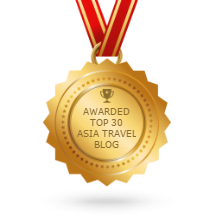Cebu City: Introduction
SHARE THIS ARTICLE:
26 November 2007
Hubby and I have been to Cebu City several times. In fact, we spent our honeymoon vacation there, but I wasn't into blogging yet at that time. Exploring this Queen City of the South can be quite a pleasant experience. I love this place because of the wide range of great food at affordable prices. Plus it offers glimpses of Cebus historical treasures such as the famous Magellan's Cross, the Basilica Minore del Santo Nino, Taoist Temple to name a few.
Cebu City is the second important modern metropolis in the Philippines, which includes the cities of Mandaue, Lapu-Lapu, Talisay and Naga. But this provincial city still remains genteel and laid-back. The place is the most important center of commerce, trade, and industry in the Visayas and Mindanao, the southern parts of the country.
If you wish to walk along the streets, Colon Street is the heart of downtown area of Cebu. This is the oldest street in the Philippines built by the Spaniards, named after Christopher Columbus. The street is lined with cinemas, restaurants, department stores and other business establishments.


Mandaue City is a 1st class city in the province of Cebu. The city is strategically located and is ten minutes away from any of the major growth points within the inner core of the Metro Cebu Area. It links up mainland Cebu to Mactan Island through the 1st Mandaue-Mactan Bridge and the 2nd Marcelo Fernan Bridge. From the Mactan Cebu International Airport, it is the door to the rest of the cities and municipalities of Cebu and the rest of the Visayas and Mindanao regions.
(Mandaue City)




There are two bridges connecting the islands of Mactan and Cebu City. The old one is the 864-meter Mandaue-Mactan Bridge, built in 1972 at a cost of P65 million.
(Mandaue-Mactan Bridge)
(Marcelo Fernan Bridge)

The second one is the Marcelo Fernan Bridge, an extradosed cable-stayed bridge. It has a total length 0f 1237 metres (4058.40 feet) with a center span of 185 metres (606.96 feet). The bridge is one of the widest and longest bridge span in the Philippines. It was named after Senator Marcelo Fernan, a political figure from Cebu City.

Fast Facts:
Population/Language:
Cebu Province has a total population of more than 3 million. Cebuano is the native tongue. While Filipino is commonly understood and spoken, the English language is widely used in business transactions and educations.
Weather:
Cebu is best from December to May when the weather turns dry. It is coolest from December to February, hottest from March to May. Temperature can rise as high as 23°C in the summer. The rainy seasons begins in July bringing torrential downpours that would sometimes inhibit movements.
Dress/What to Bring:
Wear natural-fiber, lightweight clothing. You'll feel more comfortable. Bring shorts, hat, sunglasses, bathing suits, insect repellent, flashlight, sun block cream, tough shoes for walking, rubber slippers for the beach.
The Barong Tagalog is the acceptable formal wear for men. Shorts or sleeveless shirts should never be worn when visiting churches, mosques or temples.
Electrical:
Most areas in Cebu are supplied with 220 volts, 60 cycles. A plug with 2 flat parallel prongs in the norm.
Money:
The Philippine Currency is Peso, divided into 100 centavos. Next to the peso, the U.S dollar enjoys wide acceptance. Most foreign currencies can easily be changed at banks, hotels, and authorized dealers. Foreign currency is not readily taken by establishments in Cebu. Major foreign credit cards may be accepted only at major hotels, resorts, shops and restaurants. Visitors are advised to bring sufficient amount of change in small bills or coins.
Business Hours:
Banks- 9am to 3pm Monday to Friday
Government agencies and Offices - 8am to 5pm Monday to Friday
Private Firms - 9am to 7pm Monday to Saturday
Most department Stores stay open on Sundays and Holidays.
Tipping:
Bellhops expect a tip, as do waiters, taxi drivers, hairdressers, beauticians, and porters. Most hotels and restaurants add 10% service charge on top of the government tax. Tipping 5-15% of the bill appropriate if no service charge is included.
Public Transport:
Getting around Cebu, one may take a colorful jeepney or a bus at a minimal fare. Tricycles (motorcycles with sidecars) are popular in outlaying areas and in the suburbs, quiet notably within Mactan Island. Taxicabs are widely available.
(source: cebu dti)
 SHARE THIS!
SHARE THIS! 






















3 comments